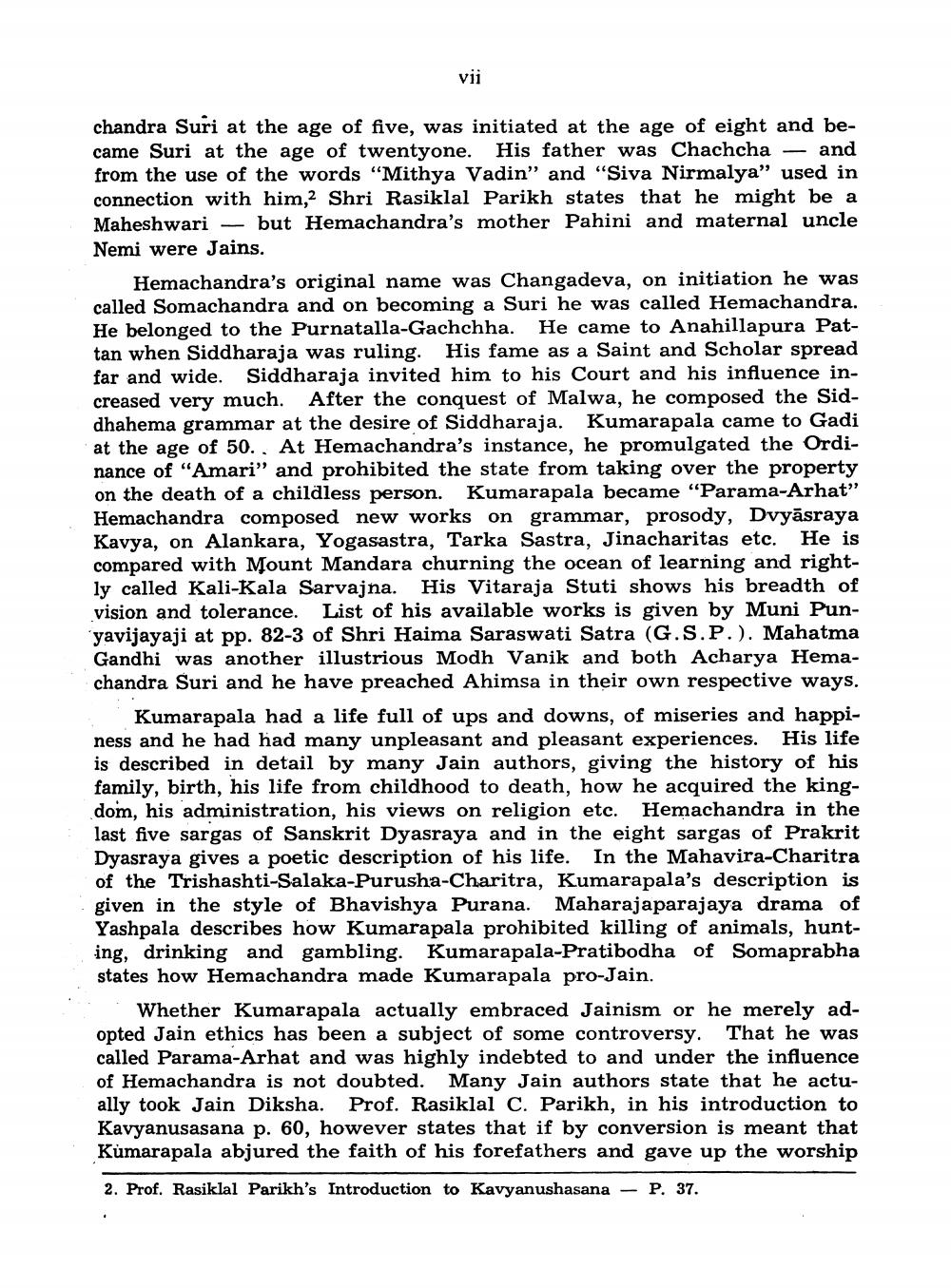________________ vii chandra Suri at the age of five, was initiated at the age of eight and became Suri at the age of twentyone. His father was Chachcha - and from the use of the words "Mithya Vadin" and "Siva Nirmalya" used in connection with him,2 Shri Rasiklal Parikh states that he might be a Maheshwari -- but Hemachandra's mother Pahini and maternal uncle Nemi were Jains. Hemachandra's original name was Changadeva, on initiation he was called Somachandra and on becoming a Suri he was called Hemachandra. He belonged to the Purnatalla-Gachchha. He came to Anahillapura Pattan when Siddharaja was ruling. His fame as a Saint and Scholar spread far and wide. Siddharaja invited him to his Court and his influence increased very much. After the conquest of Malwa, he composed the Siddhahema grammar at the desire of Siddharaja. Kumarapala came to Gadi at the age of 50. At Hemachandra's instance, he promulgated the Ordinance of "Amari" and prohibited the state from taking over the property on the death of a childless person. Kumarapala became "Parama-Arhat" Hemachandra composed new works on grammar, prosody, Dvyasraya Kavya, on Alankara, Yogasastra, Tarka Sastra, Jinacharitas etc. He is compared with Mount Mandara churning the ocean of learning and rightly called Kali-Kala Sarvajna. His Vitaraja Stuti shows his breadth of vision and tolerance. List of his available works is given by Muni Punyavijayaji at pp. 82-3 of Shri Haima Saraswati Satra (G.S.P.). Mahatma Gandhi was another illustrious Modh Vanik and both Acharya Hemachandra Suri and he have preached Ahimsa in their own respective ways. : Kumarapala had a life full of ups and downs, of miseries and happiness and he had had many unpleasant and pleasant experiences. His life is described in detail by many Jain authors, giving the history of his family, birth, his life from childhood to death, how he acquired the kingdom, his administration, his views on religion etc. Hemachandra in the last five sargas of Sanskrit Dyasraya and in the eight sargas of Prakrit Dyasraya gives a poetic description of his life. In the Mahavira-Charitra of the Trishashti-Salaka-Purusha-Charitra, Kumarapala's description is given in the style of Bhavishya Purana. Maharajaparajaya drama of Yashpala describes how Kumarapala prohibited killing of animals, hunting, drinking and gambling. Kumarapala-Pratibodha of Somaprabha states how Hemachandra made Kumarapala pro-Jain. .. Whether Kumarapala actually embraced Jainism or he merely adopted Jain ethics has been a subject of some controversy. That he was called Parama-Arhat and was highly indebted to and under the influence of Hemachandra is not doubted. Many Jain authors state that he actually took Jain Diksha. Prof. Rasiklal C. Parikh, in his introduction to Kavyanusasana p. 60, however states that if by conversion is meant that Kumarapala abjured the faith of his forefathers and gave up the worship 2. Prof. Rasiklal Parikh's Introduction to Kavyanushasana - P. 37.




